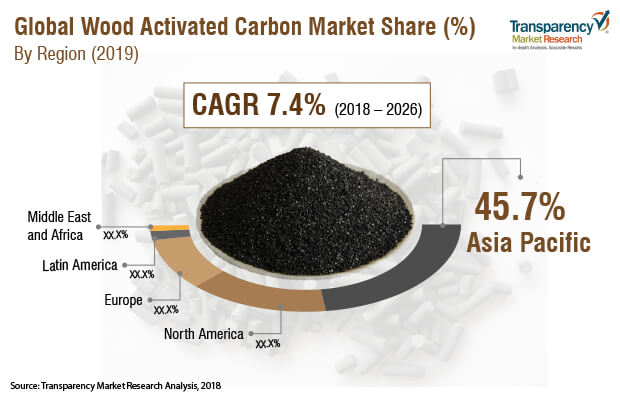Understanding Impact of COVID-19 on Wood Activated Carbon Market
Wood Activated Carbon Market – Snapshot
Coal is a key non-renewable raw material that has been used for the production of activated carbon over the last few years. Coal is extensively consumed in other core industrial applications, such as power generation. Therefore, alternate sources of raw materials, such as wood, are likely to gain momentum in the near future. Activated carbon produced from wood has significant carbon content and lesser inorganic components and impurities hence, wood is a viable source of raw material. Key attributes of wood activated carbon include high porosity, well developed surface area, and good mechanical strength.
Enquiry Before Buying:
https://www.transparencymarketresearch.com/sample/sample.php?flag=EB&rep_id=4011
The global wood activated carbon market has been segmented based on application and region. Based on application, the global wood activated carbon market has been divided into gas adsorption, removal of impurities, decolorization, and others. The removal of impurities segment dominates the wood activated carbon market, followed by the decolorization segment. Implementation of regulations related to water and air pollution across the globe is a key factor driving the global wood activated carbon market. Several underdeveloped economies across the globe are facing the challenge of depleting clean water resources due to the rise in population. Surge in demand for purification of contaminated groundwater and increase in demand for the removal of particulate matter and mercury emissions from liquid and gases streams are boosting the wood activated carbon market. According to the U.S. Environmental Protection Agency (EPA) Safe Drinking Water Act, the country limits the concentration of disinfection by-products (DBP) in drinking water. In 2015, the U.S. established new rules to assess and manage risks of algal toxins in public water systems. These factors are expected to increase the demand for wood activated carbon in drinking water applications. Increase in environment protection legislations is estimated to propel the demand for wood activated carbon. The U.S. EPA and European Union’s REACH require industries to treat wastewater before releasing it into the environment. This, in turn, is projected to significantly increase the demand for wood activated carbon during the forecast period.
Request For Custom Research: https://www.transparencymarketresearch.com/sample/sample.php?flag=CR&rep_id=4011

Buy Now : https://www.transparencymarketresearch.com/checkout.php?rep_id=4011<ype=S
Wood activated carbon is employed in various applications that clean the environment. Demand for wood activated carbon is likely to increase owing to the rise in focus on sustainability and environment recovery. Wood activated carbon is increasingly used in filtration units of pharmaceutical and synthetic chemicals and food & beverages industries for purification, and deodorization of ingredients. This is a major factor boosting the wood activated carbon market. Recovery in the auto industry is anticipated to be a key factor driving the demand for wood activated carbon. Wood activated carbon canisters are used in vehicles to reduce hydrocarbon emission and improve the performance of the engine. Increase in production of automotive in developing economies such as China, India, and Mexico is likely to propel the demand for wood activated carbon in the automotive industry in the near future.
Comments
Post a Comment